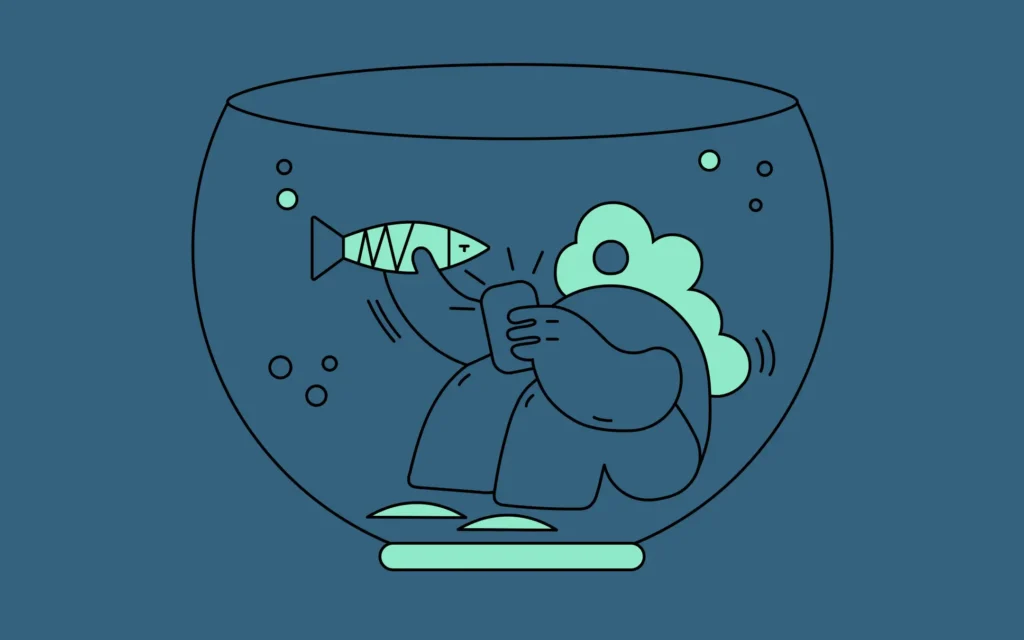The Role of Research to Develop Personas
The Role of Research to Develop Personas

New Year, New You
It’s January again, and as with every year, many people are seeking to better themselves. The blank slate of a new year is full of endless possibility. Brands are not immune to this pursuit of self-improvement either. Equipped with a renewed budget and a clear head from the holiday break, many businesses are wondering what’s the best way to save time and money, turn insight into action, and find a meaningful place in their customers’ life. If you’re not already, it’s time to unleash the power of personas.
Too often, brands are created, products are developed, and campaigns are launched seeking to be everything to everyone. Casting the widest net possible, brands target nameless, faceless users – defined loosely by obligatory data points that lack any meaningful context. And that’s a shame because it results in a ton of wasted energy being shot into the void.
Know Your Customer, Know Thyself
At their best, personas are like vividly illustrated dictionaries of your customers, based on a combination of real data and insights about your customer demographics, behaviors, motivations, goals, and any other information you find useful. In full color, they give you something to aim at, aspire to, and hold yourself accountable. Perhaps most importantly, personas remind brands that they are, in fact, making things for real people. They provide a beating heart for your products, messaging, and design.
If you know that your ideal customer is a 27-year-old businesswoman named Sage who has one child under five, regularly listens to podcasts, bikes to work, and primarily shops through subscription services, you’re much better suited to craft a resonant visual and verbal identity than if you launched a campaign broadly aimed at “millennials.”
Start with the Truth
When crafting personas, Daryl McCullough, CEO of Citizen Relations, believes the best place to start is with the truth. “Truth is not marketing speak or brand attributes,” he says. “Instead, it is the pure reason for a consumer or customer to care. Consumers today expect that a brand persona is honest, human, and true.”
Your brand truth is the backbone for all your experiments in messaging and targeting. It’s the focal point around which you can begin to ask questions, like what circumstances triggered your customer to start looking for a solution like yours? What results were they seeking? What risks were they avoiding? What were the barriers to purchase? What do they believe your competitors do better? What has been the impact of using your solution, at a business and personal level? How does using your solution make them feel?
Keep it Human
The folks over at New Kind have a very simple rubric for guiding personas. First, your personas must be built on research. Second, you should be able to count all your personas on one hand. And third, everyone in the company should be able to recall all your personas off the top of their head. It’s a great reminder that no matter how deep you go with your research, you still need to be able to condense and communicate it in a memorable way for your team. As you examine website and social media analytics, customer interviews, and market research, the end result needs to be translated into something human and actionable.
Types of Research
These days, we are blessed with a plethora of tools for getting to know our customers. We know what keywords they are using, what websites they visit before and after, their behavior on social, how they respond to ads, and what kind of content generates the most engagement. By comparing this to specific user data, such as gender, relationship status, and so on, brands are able to create a frighteningly accurate portrait of their audience.
Alongside data-driven tools, customer personas can be shaped by surveys, feedback, and one-on-one interviews.
Find Your Way With Empathy Mapping
Data collection is one thing, but the ability for a brand to truly step into the shoes of a customer – and sustain this perspective over a long period of time – is far more difficult. Brands are always in danger of losing touch with how people really think, speak, and feel. The relationship between people and brands is like that of locals and tourists. Appearing fluent in a foreign country takes rigorous, relentless practice, and locals are always going to be detecting invisible signals you can’t see.
Empathy mapping is a fantastic way to maintain long-term customer perspective, create a shared understanding of user needs, and aid in decision making. It can reveal also reveal less obvious insights, like obstacles in the customer journey and new opportunities for communication. Dave Gray, Founder of XPLANE, has created a very helpful empathy map canvas to improve customer experience, navigate organizational politics, design better work environments, and a host of other things.
Never Forget Your Sales Team
As we’ve discussed before, your sales team are the ones on the frontlines selling your products and services every day. If you don’t include them in the conversation, they are going to ignore your materials or create their own – which only leads to an inconsistent brand experience for your clients and customers.
There are dozens of way to strengthen your brand, but money spent on better understanding your audience will never be money wasted. To learn more about how your brand can make 2019 the year of the persona, contact Founding Partner Tracy Lloyd at [email protected].
Emotive Brand is a brand strategy and design firm in San Francisco.






